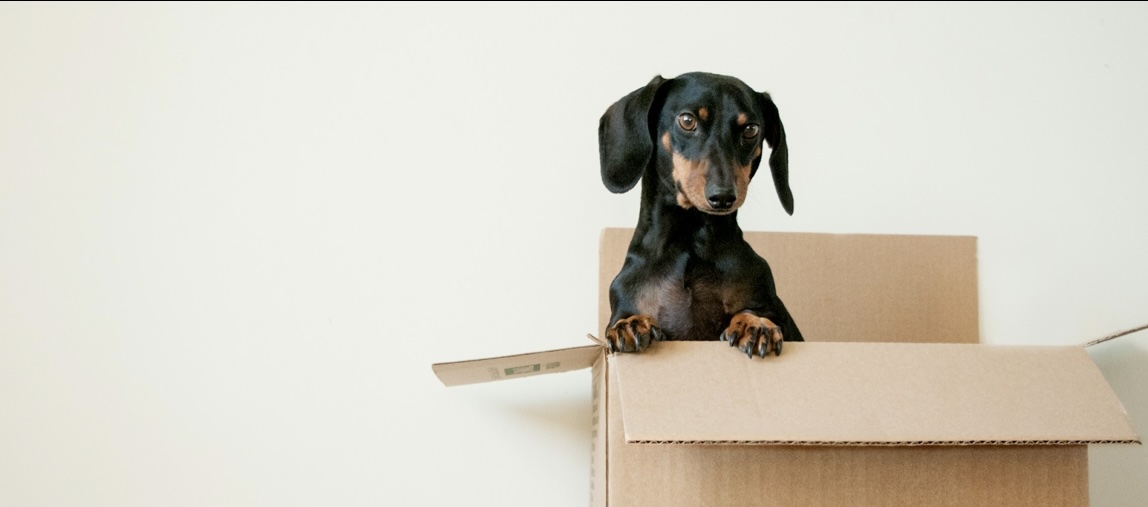How to Plan a Move - Moving Checklist

Whether you consider yourself a spontaneous person or vice versa — a thoughtful one who prefers to control everything from A to Z, you may agree that unforeseen difficulties and unexpected situations aren’t what we would like to deal with during relocation.
Any wrong step can bring chaos into the life even at the planning stage of the moving process, let alone the moving day itself. If you want to avoid it, but don’t know where to start, we'll help you out so you don't have to worry about this issue anymore!
We have prepared a step-by-step manual which will allow you to delve into the details and get answers to basic questions that inevitably arise before the move.
Strategies for a Stress-Free Move
Planning a move feels a bit like baking a cake — you have to follow the recipe carefully to get an excellent result. Just as missing an important ingredient can ruin your dessert, skipping a single step during your move planning can lead to a real disaster. Without a well-thought-out plan, you might find yourself scrambling to pack at the last minute or dealing with unexpected hurdles on moving day, making the whole process much more stressful than it could be.
Taking the time to plan your move carefully is a key to success. We have created a detailed guide, following which you can be sure that no detail has gone unnoticed.
Best Time for Planning a Relocation
When it comes to planning a move, timing makes a big difference. Whether you're moving across the city or across Canada, figuring out the best time to start planning can save you a lot of headaches down the road.
The secret is simple — it’s better to start planning future relocation as early as possible. However, if free time is a luxury which you can barely afford, take into account these 3 aspects to calculate the possible streamlines:
- Relocation distance. How far you’re moving plays a crucial role. If you're moving across the country, you’ll need to start planning way earlier, like three to six months in advance. If it’s a local move, you can do all the jobs in about a couple of months ahead.
- Size of the move. Got a big house with tons of stuff? You’ll need more time to sort, pack, and move everything. Start decluttering and packing things which you don’t need daily about two to three months before the move. If you're in a smaller place, like a studio or one-bedroom house, you can start about a month or two before the «X-day» comes.
- Moving season. If you’re not limited in time, we recommend relocating during the off-season (from October to April), when it’s quieter and cheaper to move due to the low demand for services of moving companies. Also, think about moving in the middle of the month. Moving companies are less busy during this period of time, so it may be cheaper than moving at the beginning or end of the month.
Additional advice: To ensure you're well-prepared for your upcoming move, it's essential to have enough deferred money to cover all expenses. Start saving for your move at least a year in advance. This way, when it's time to execute your move, you'll have the financial safety net you need.
To-do list Before the Big Day
Once you’ve solved the global problems like choosing a new place of residence, it’s time to start performing a number of pressing tasks. Before proceeding to the practical side of the moving process, we recommend making a list of things to do. This will minimize the risk of making mistakes in the future and save you from any unexpected costs.
If this is your first time relocating, or you simply prefer to be reinsured to avoid any unpleasant happenings, here is a detailed list of basic things to do before taking the final step toward great changes in life.
1. Pick a date for your move
When picking a date, it’s first necessary to check the availability of professional movers, as they book up quickly, especially during peak seasons like summer, month-end, and weekends. Align the relocation with your personal schedule, avoiding busy periods where you might be overwhelmed. If you're living in the rented property, coordinate with the end of your current lease and the start of the new one to avoid paying double rent or exclude the possibility of having nowhere to stay.
Weather is another important factor. Even if weather forecasts aren't always to be trusted, it’s better to keep an eye on this information to avoid moving during extreme conditions, which can lead to delays, increased stress, and potential damage to your belongings.
2. Create a financial plan
A financial plan for moving helps you figure out how much money you’ll need and where it’s all going to go. It covers everything from the big costs like hiring professional movers to smaller things like buying boxes and other packing materials.
While planning your budget, take every detail into consideration, even if it seems insignificant, and never forget about the old proverb: measure twice, cut once.
- Estimating costs. Start by adding up all the expenses you can think of. This includes movers’ fees, packing supplies, travel and insurance costs, post-relocation expenses. The more realistic your moving budget, the less chances of financial surprises during your move.
- Budgeting smart. Once you know how much things are going to cost, decide how much you can afford to spend on each part of the relocation. That way, you won’t be caught off guard by any unexpected bills.
- Saving for surprises. Always set aside a bit of extra cash for those surprises that can come out of nowhere. This includes unplanned costs like emergency repairs or last-minute changes in moving plans.
You can request a free calculation of the preliminary cost of the move based on your needs. This option is available on our website, allowing you to plan a budget in more detail.
3. Reduce the number of your belongings
Throughout our lives, we accumulate lots of belongings. While they might all seem essential at first glance, the reality is quite different. Many of these items end up gathering dust, being completely forgotten. In this regard, a logical question arises: why do you have to pay for transporting them to your new home?
To ensure a smoother move and a more organized living space, it's important to take a critical look at your possessions. Start by identifying items you haven't used in the past few months. If you haven't needed it recently, chances are you won't use it in the future.
Start by going through each room and identifying items you don’t need anymore. Be honest about what you actually use versus what’s just taking up space. Create four categories: keep, donate, sell, and toss. Remember that the final moving cost depends, inter alia, on the size of the move and the weight of all items transported, so you can significantly save money by sorting out all items in advance.
4. Make a moving inventory list
Having a detailed list of your possessions will help you stay well-organized during your move. Moreover, it’ll make sure you can keep track of all your items and know that everything has arrived at the destination in its original state.
A moving inventory sheet is a document that lists all belongings you want to transport to the new home. This list contains all important information about each item, its condition and estimated value with division into groups depending on the room it belongs to.
5. Do a search for the moving company
Stop for a moment, look around your home, and ask yourself honestly: can you really move entire household items from point A to point B on your own? This process involves packing all belongings, loading everything into a truck, transporting and unloading it in a new place, and arranging items at the final stage. Just a thought of it can drive you crazy, especially if you relocate for the first time. That’s why it’s safer and efficient to entrust the work to professionals, whether it’s a local or long-distance move.
You can find the reliable moving companies on our platform, where all important information like specialization, pricing policy, testimonials, and contacts is provided. Specialists have the appropriate equipment, experience, and skills to handle move of any type.
6. Pack all belongings
Packing is included in the set of additional services provided by moving companies, but you can do it yourself, if you want to save a little money. In this case, start packing your belongings as early as possible, following these simple rules:
- Find out what items are non-allowable to move due to an elevated risk of damage. A manager of the moving company will provide you a full list of such belongings, but in a nutshell, these include plants, hazardous materials, perishable foods, weapons and ammunition, etc.
- Buy enough packing materials of various types. Here can be attributed boxes of different sizes, packing tape, bubble wrap, and packing paper. It’s better to have more supplies than to run out midway through packing.
- Pack the items that you seldom use first. This makes the packing process more manageable and ensures that the things you need daily remain accessible until the final day before the move.
- Pack by room and label clearly. Pack one room at a time and label each box on all sides. Write down which room the box should go to in your new home to make unpacking easier for you.
Speaking of important documents such as passports, birth certificates, and financial papers, keep it in a separate folder that stays with you during the move. This ensures that crucial documents are safe and can be quickly accessed if needed.
Tips to Ensure a Smooth Moving Day
Moving day is the grand finale of your relocation journey, when all your careful planning comes together. You've got to think about everything — parking challenges, coordinating with the movers, ensuring the safety of your belongings, and anticipating any hurdles that may arise.
Follow these steps to master the challenges of moving day and ensure everything goes like clockwork:
- Wake up early. Get up early to give yourself enough time to enjoy a cup of your favourite coffee and eat a hearty breakfast. It’s an enjoyable routine which sets a positive tone for the day.
- Pack up the rest of your stuff. Finish packing any remaining items into boxes and reinforce the bottom with extra tape for added security.
- Remove any obstacles from the corridors and entryway. Clear pathways in your old home by removing obstacles such as furniture and rugs. This makes work easier for movers and reduces the risk of potential accidents.
- Make one final check. Do a final walkthrough of your old place of residence before leaving. Check all stowage spaces to ensure nothing has been forgotten in a hurry.
- Ensure the condition of your old home. Take a moment to inspect the condition of your old home. Document any existing damages or issues for your records and make sure all windows and the front door are closed.
Even whilst the moving process can be challenging, stay calm and assess the situation objectively. Only by keeping a cool head, you will be able to navigate the complexities of relocation successfully and turn a day of the move into a pleasant chapter of your life.
Other articles

10 Questions to Ask when Hiring a Moving Company

Your Go-To Checklist for Long Distance Moving

